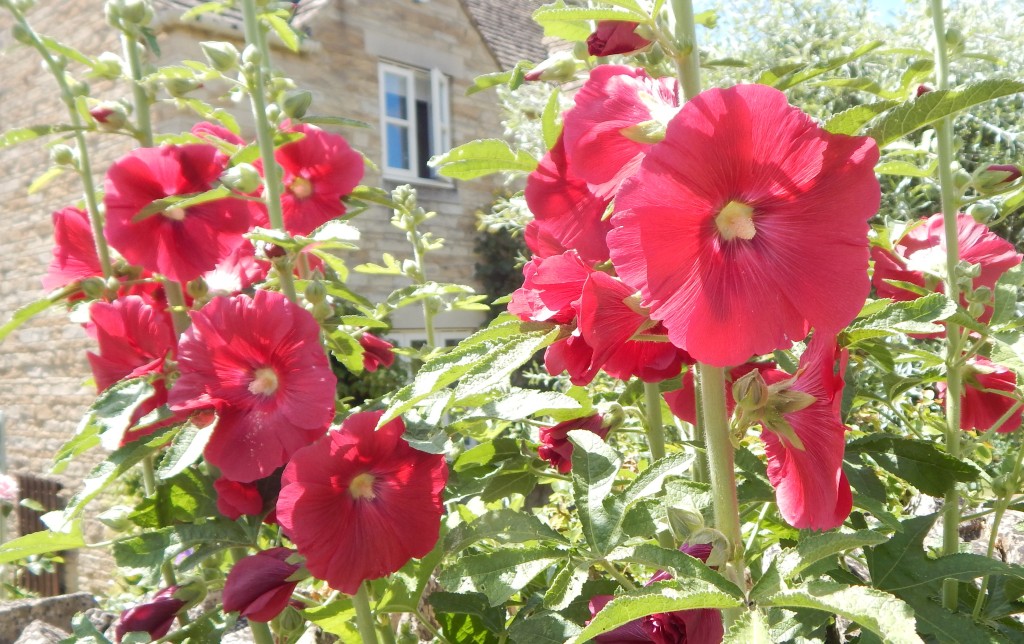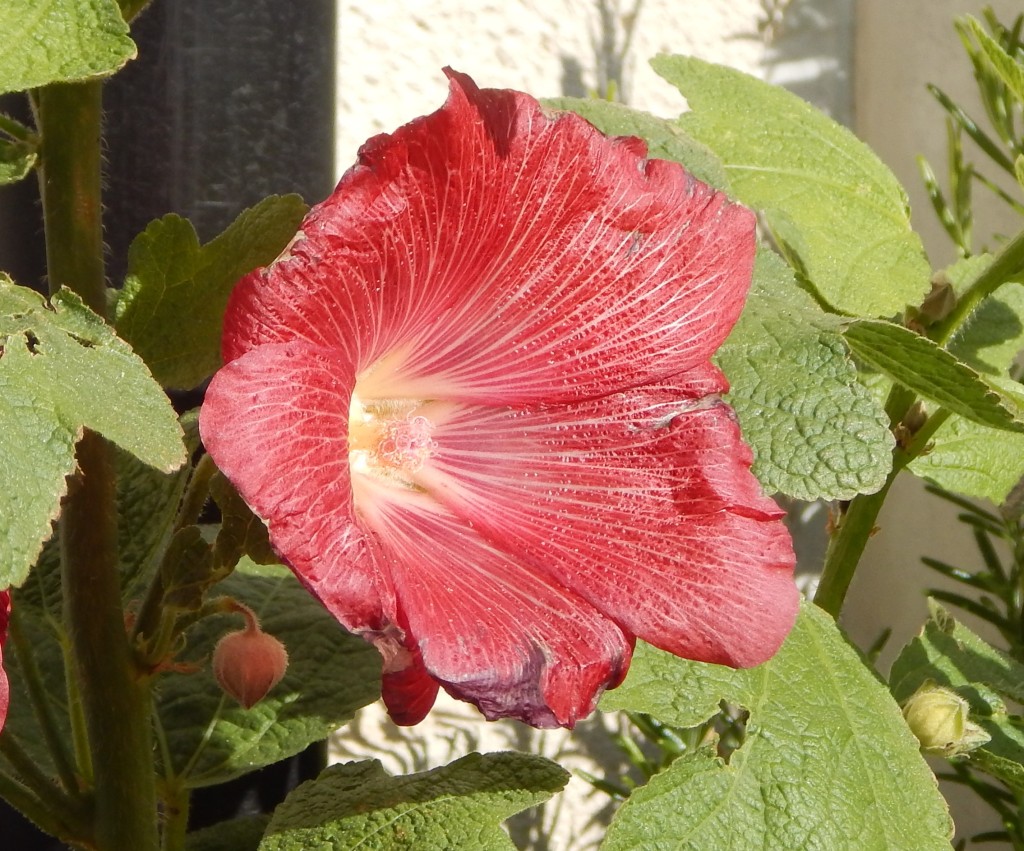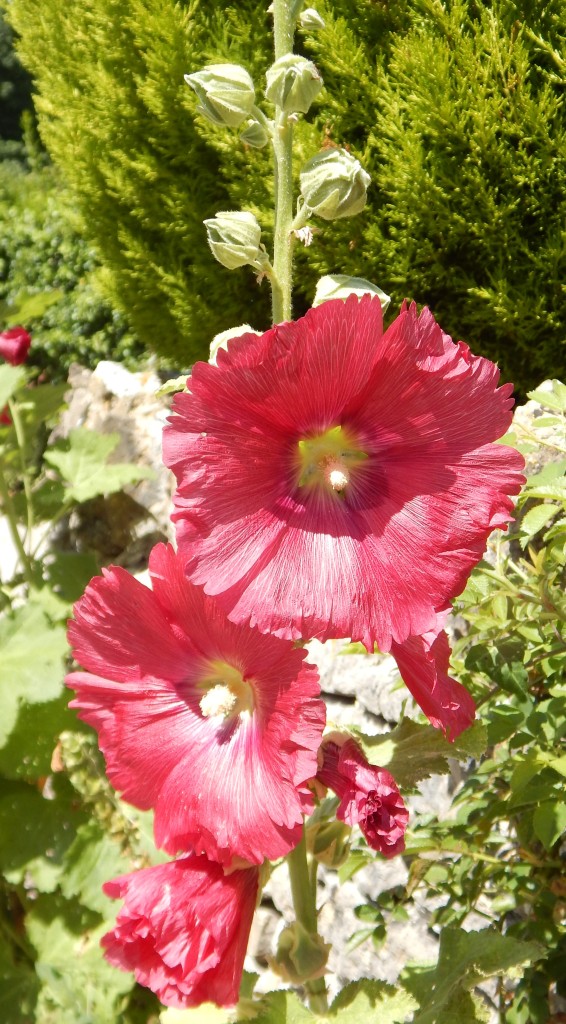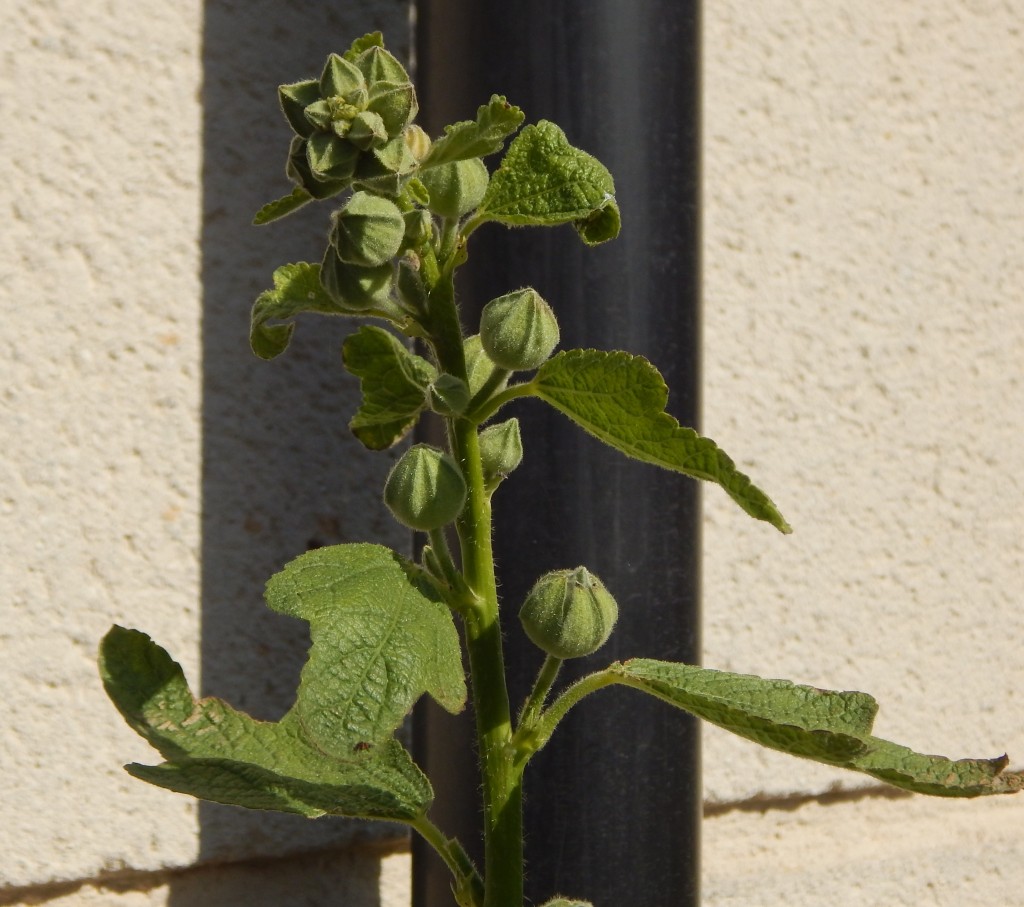
[013] Alcea rosea, Hollyhock
Introduction
Alcea Rosea, the Hollyhock, is a tall decorative, large-flowered garden plant, often seen spreading outside gardens but not yet threateningly invasive.
It is native to China but was introduced into England as early as the Fifteenth Century. Several other Alcea species are native to Europe and are also called hollyhocks, so Alcea Rosea is technically the Common Hollyhock.
Taxonomy
Kingdom – Plants
Division – Vascular Plants
Class – Flowering Plants
Order – Malvales
Family – Malvaceae (Mallow)
Genus – Alcea (Hollyhock)
Scientific Name – Alcea rosea
It has Scientific synonyms Althea rosea, Althea Mexicana and Althea sinensis. Althea is a closely related genus that includes the marsh-mallow and used to include the Hollyhock.
The Hollyhock is widely grown in gardens and has dozens of named cultivars.
Name
William Turner (1509-1568) an early herbalist gave it the name ‘holyoke.’ Wiktionary says that the name was in use before that and derives from ‘hokke’ or ‘hoc’ meaning Mallow so that it is a ‘Holy Mallow’. It is a close relative of Mallow and Marsh-mallow has some similarity in appearance.
Alcea and Althaea are both Latin names for plants in the Mallow family.
Description
The Mallow family, Malvaceae, includes several closely related plants with similar flowers and the Hollyhock has an obvious resemblance to Mallow, Tree Mallow, Marsh-mallow and Hibiscus with its splayed purple flowers. Cultivated varieties now come in a number of different colours.




What distinguishes the Hollyhock is what biologists call its ‘habit’ or general structure. One or more main stems grow rapidly to a height of two or three metres and each has flowers emerging all the way up the stem.
Habitat and use
Perhaps the rapid growth of this plant contributes to its popularity. It is generally a biennial but is sometimes treated as an annual or short-lived perennial. It will self-seed and may flower in the first year if the seeds germinate early enough.
It is not my intention to give detailed cultivation notes for garden flowers and this is primarily a garden plant. But it does seem to adapt well to wherever the seeds find themselves. There is a house a few doors from where I used to live that always had Hollyhocks apparently climbing up its wall – presumably from seeds in the tiny space between the house and the pavement.


Alcea rosea was introduced to England for herbal use – as a moisturizer or laxative; or to control inflammation, bleeding gums or bedwetting.


Other Notes
I see hollyhocks on footpaths and verges where they are clearly wild and, as noted above on pavements.
See also
[221] Mallow is a clearly related species. In terms of its rapid growth and habit you can also compare this plant to [116] Foxglove and [171] Sunflower.
